
Accounting All-In-One For Dummies
Published by:
John Wiley & Sons, Inc.,
111 River Street,
Hoboken, NJ 07030-5774,
www.wiley.com
Copyright 2014 by John Wiley & Sons, Inc., Hoboken, New Jersey
Published simultaneously in Canada
No part of this publication may be reproduced, stored in a retrieval system or transmitted in any form or by any means, electronic, mechanical, photocopying, recording, scanning or otherwise, except as permitted under Sections 107 or 108 of the 1976 United States Copyright Act, without the prior written permission of the Publisher. Requests to the Publisher for permission should be addressed to the Permissions Department, John Wiley & Sons, Inc., 111 River Street, Hoboken, NJ 07030, (201) 748-6011, fax (201) 748-6008, or online at http://www.wiley.com/go/permissions .
Trademarks: Wiley, the Wiley logo, For Dummies, the Dummies Man logo, Dummies.com, Making Everything Easier, and related trade dress are trademarks or registered trademarks of John Wiley & Sons, Inc., and may not be used without written permission. All other trademarks are the property of their respective owners. John Wiley & Sons, Inc., is not associated with any product or vendor mentioned in this book.
LIMIT OF LIABILITY/DISCLAIMER OF WARRANTY : WHILE THE PUBLISHER AND AUTHOR HAVE USED THEIR BEST EFFORTS IN PREPARING THIS BOOK, THEY MAKE NO REPRESENTATIONS OR WARRANTIES WITH RESPECT TO THE ACCURACY OR COMPLETENESS OF THE CONTENTS OF THIS BOOK AND SPECIFICALLY DISCLAIM ANY IMPLIED WARRANTIES OF MERCHANTABILITY OR FITNESS FOR A PARTICULAR PURPOSE. NO WARRANTY MAY BE CREATED OR EXTENDED BY SALES REPRESENTATIVES OR WRITTEN SALES MATERIALS. THE ADVISE AND STRATEGIES CONTAINED HEREIN MAY NOT BE SUITABLE FOR YOUR SITUATION. YOU SHOULD CONSULT WITH A PROFESSIONAL WHERE APPROPRIATE. NEITHER THE PUBLISHER NOR THE AUTHOR SHALL BE LIABLE FOR DAMAGES ARISING HEREFROM.
For general information on our other products and services, please contact our Customer Care Department within the U.S. at 877-762-2974, outside the U.S. at 317-572-3993, or fax 317-572-4002. For technical support, please visit www.wiley.com/techsupport .
Wiley publishes in a variety of print and electronic formats and by print-on-demand. Some material included with standard print versions of this book may not be included in e-books or in print-on-demand. If this book refers to media such as a CD or DVD that is not included in the version you purchased, you may download this material at http://booksupport.wiley.com . For more information about Wiley products, visit www.wiley.com .
Library of Congress Control Number: 2013954224
ISBN 978-1-118-75800-7 (pbk); ISBN 978-1-118-81365-2 (ebk); ISBN 978-1-118-81374-4 (ebk)
Manufactured in the United States of America
10 9 8 7 6 5 4 3 2 1
Chapter 1
Grasping Bookkeeping and Accounting Basics
In This Chapter
 Examining the differences between bookkeeping and accounting
Examining the differences between bookkeeping and accounting
 Getting to know the accounting cycle
Getting to know the accounting cycle
 Maintaining balance with the fundamental accounting equation
Maintaining balance with the fundamental accounting equation
M ost folks aren't enthusiastic bookkeepers. You probably balance your checkbook against your bank statement every month and somehow manage to pull together all the records you need for your annual federal income tax return. But if you're like most people, you stuff your bills in a drawer and just drag them out once a month when you pay them.
Individuals can get along quite well without much bookkeeping but the exact opposite is true for a business. A business needs a good bookkeeping and accounting system to operate day to day. A business needs accurate and timely data to operate effectively.
In addition to facilitating day-to-day operations, a company's bookkeeping and accounting system serves as the source of information for preparing its periodic financial statements, tax returns, and reports to managers. The accuracy of these reports is critical to the business's survival. That's because managers use financial reports to make decisions. If the reports aren't accurate, managers can't make intelligent decisions.
Obviously, then, a business manager must be sure that the company's bookkeeping and accounting system is dependable and up to snuff. This chapter shows you what bookkeepers and accountants do, so you have a clear idea of what it takes to ensure that the information coming out of the accounting system is complete, accurate, and timely.
Knowing What Bookkeeping and Accounting Are All About
In a nutshell, accountants keep the books of a business (or not-for-profit or government entity) by following systematic methods to record all the financial activities and prepare summaries. This summary information is used to create financial statements.
Financial statements are sent to stakeholders. Stakeholders are people who have a stake in the business's success or failure. Here are some examples of stakeholders:
- Stockholders: If you own stock in General Electric, for example, you receive regular financial reports. Stockholders are owners of the business. They need to know the financial condition of the business they own.
- Creditors: Entities that loan money to your business are creditors. They need to review financial statements to determine whether your business still has the ability to repay principal and make interest payments on the loan.
- Regulators: Most businesses have to answer to some type of regulator. If you produce food, you send financial reports to the Food and Drug Administration (FDA). Reviewing financial statements is one responsibility of a regulator.
The following sections help you embark on your journey to develop a better understanding of bookkeeping and accounting. Here you discover the differences between the two and get a bird's-eye view of how they interact.
Distinguishing between bookkeeping and accounting
 Distinguishing between bookkeeping and accounting is important, because they're not completely interchangeable. Bookkeeping refers mainly to the recordkeeping aspects of accounting the process (some would say the drudgery) of recording all the detailed information regarding the transactions and other activities of a business (or other organization, venture, or project).
Distinguishing between bookkeeping and accounting is important, because they're not completely interchangeable. Bookkeeping refers mainly to the recordkeeping aspects of accounting the process (some would say the drudgery) of recording all the detailed information regarding the transactions and other activities of a business (or other organization, venture, or project).
The term accounting is much broader; it enters the realm of designing the bookkeeping system, establishing controls to make sure the system is working well, and analyzing and verifying the recorded information. Accountants give orders; bookkeepers follow them.
Bookkeepers spend more time with the recordkeeping process and dealing with problems that inevitably arise in recording so much information. Accountants, on the other hand, have a different focus. You can think of accounting as what goes on before and after bookkeeping: accountants design the bookkeeping and accounting system (before) and use the information that the bookkeepers enter to create financial statements, tax returns, and various internal-use reports for managers (after).
Taking a panoramic view of bookkeeping and accounting
Figure presents a panoramic view of bookkeeping and accounting for businesses and other entities that carry on business activities. This brief overview can't do justice to all the details of bookkeeping and accounting, of course. But it serves to clarify important differences between bookkeeping and accounting.
Next page

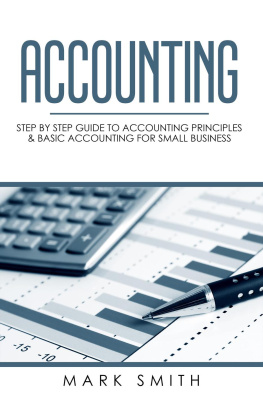
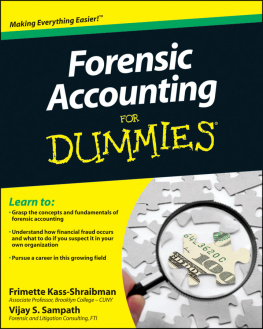



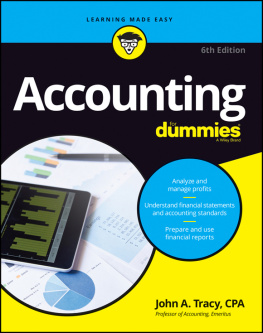
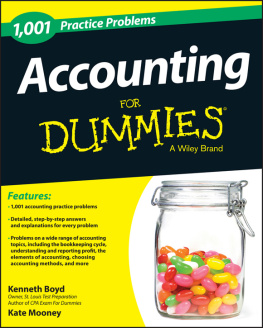
![Jane E. Kelly - Bookkeeping and Accounting All-in-One For Dummies [UK edition]](/uploads/posts/book/80164/thumbs/jane-e-kelly-bookkeeping-and-accounting.jpg)
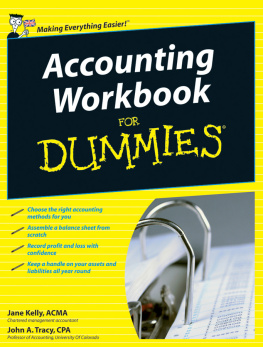
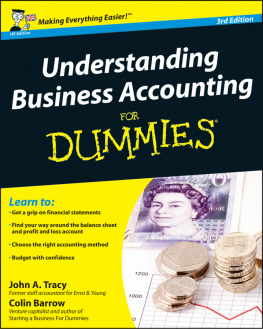
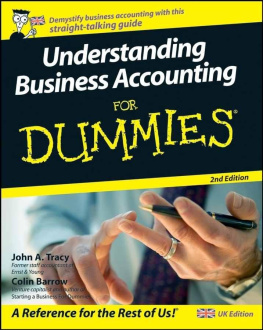
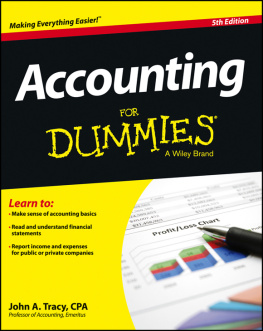

 Examining the differences between bookkeeping and accounting
Examining the differences between bookkeeping and accounting Distinguishing between bookkeeping and accounting is important, because they're not completely interchangeable. Bookkeeping refers mainly to the recordkeeping aspects of accounting the process (some would say the drudgery) of recording all the detailed information regarding the transactions and other activities of a business (or other organization, venture, or project).
Distinguishing between bookkeeping and accounting is important, because they're not completely interchangeable. Bookkeeping refers mainly to the recordkeeping aspects of accounting the process (some would say the drudgery) of recording all the detailed information regarding the transactions and other activities of a business (or other organization, venture, or project).